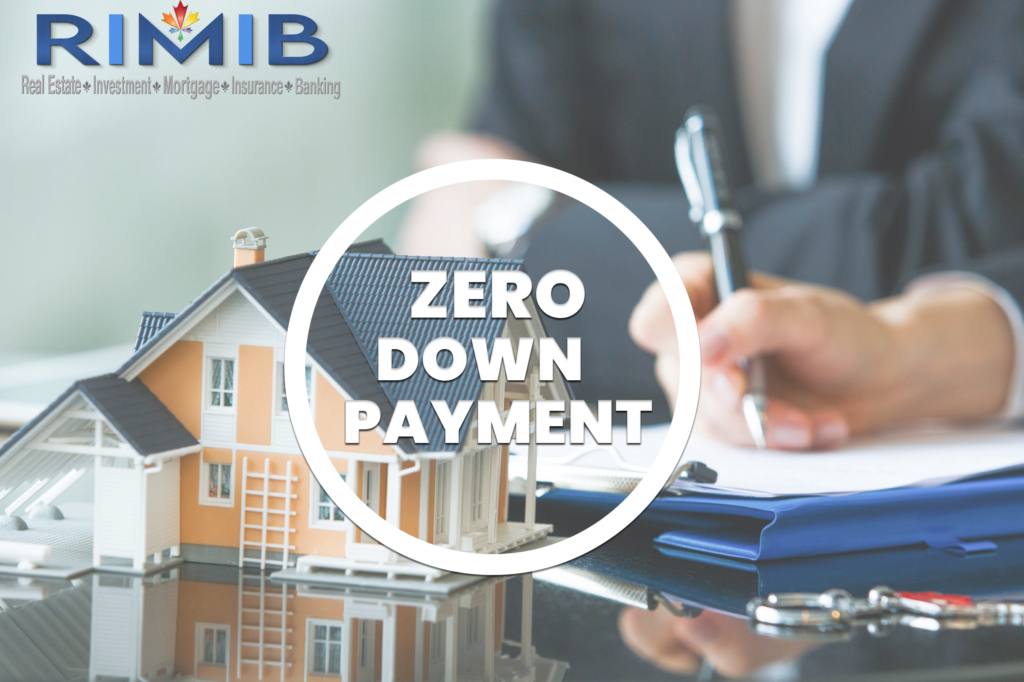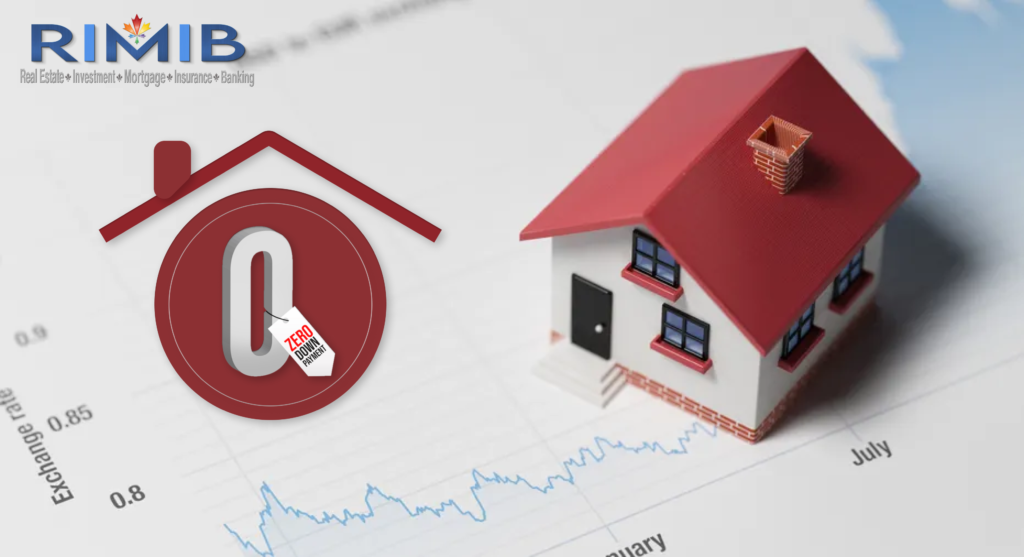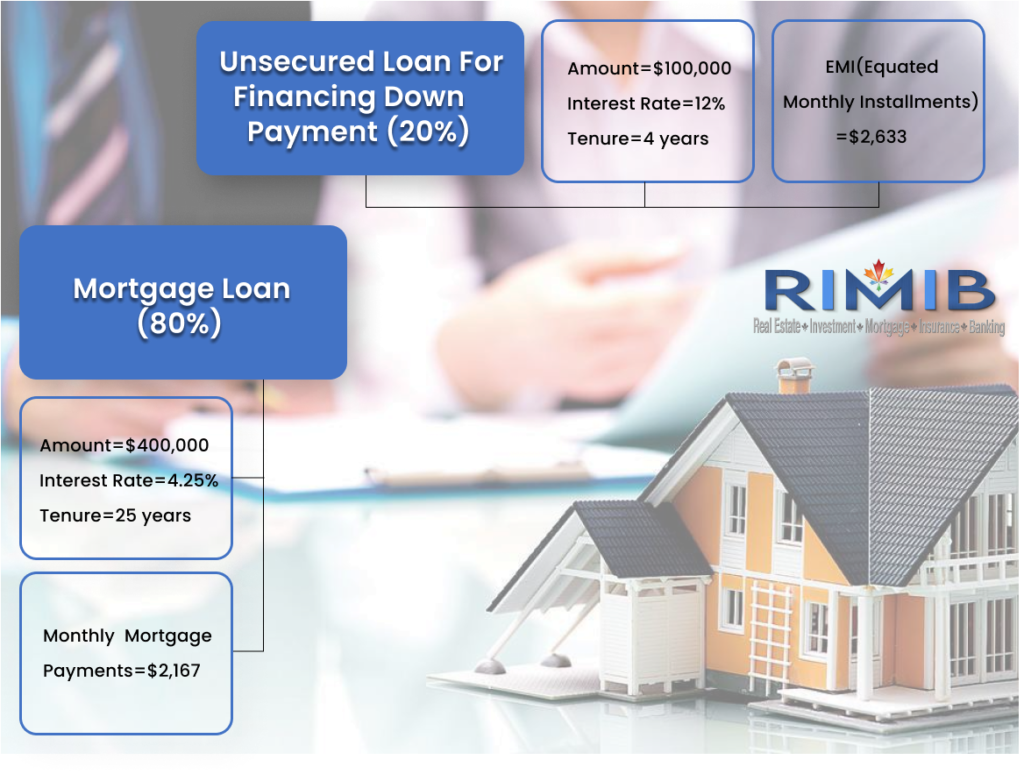What Are Zero-Down Mortgages In Canada?
Zero down mortgage can help you out in getting your dream home easily. How? Read this blog and find out.

Source: Freepik


For most homebuyers, arranging for the “down payment money” is the biggest hurdle. Do you wish to buy your house paying no down payment out of your pocket? Well, zero-down mortgages can exactly help you with that.
What Is a Zero-Down Mortgage in Simple Language?
Own your home to issue the highest check of your life. Most of the down payments are typically 20% of the purchase price.
The average prices of homes in Canada are around $716,000. Thus, you need a down payment of $143,200
($716,000 * 20%)
to own a place, which you can call “my home.”
Not everybody can do that, and hence, they look for options.
A Zero-down mortgage is a preferred way of owning a house without paying the down payment out of your pocket. You can take a loan to make even the down payment from a financial institution.
By doing this, you get two loans associated with your residential property, which are:
- Loan A, which financed your down payment (typically 20% of the purchase price)
and
- Loan B (mortgage loan), which is going to finance the rest of the amount (typically 80% of the purchase price)
You will also be required to make two monthly payments, one for Loan A and the other for Loan B. Also, you notice that both these loans will vary in interest rates, tenure, and monthly re-payments.
Further, you might borrow money to meet your down payment needs. Have some ready cash while buying your house. This cash is to meet all the expenses associated with the closing costs (Typically, 2% to 5% of the purchase price), such as inspection services, appraisal fees, title searches, legal fees, land transfer tax, etc.
If you have not saved for these expenses, get funding for the closing costs. And yes, this will be Loan C.
What Is the Need for A Zero-Down Mortgage, and To Whom Does This Scheme Suits?


“I always dreamt of a house. Not be the spacious bungalows or luxury villas, a decent condominium for me and family.
Arranging for the down payments was always the toughest, and as a result, I remained devoid of “my house” for a large part of my life.
But, as soon as I got to know about this zero-down mortgage thing, it changed my life.,” said Katherine Smith, a resident of the Greater Toronto Area who recently purchased a condominium there.
Katherine is not alone. There are several victims of the ever-increasing prices of homes in the Canadian market.
A recent report published on 19th April 2022 by the Canadian Real Estate Association (CREA) which states that the MLS® Home-Price Index (HPI) has risen:
- 1% month-over-month and
- 27.1% year-over-year
It is undoubtedly a mammoth rise in real estate prices, making it inaccessible for people like Katherine, who belong to the lower and middle-class income group.
Such a proposition makes zero-down mortgages an attractive option for those who:
- Desperately want to own property under their name
- Want to enjoy the benefits of capital appreciation and the rising Canadian housing market
- You do not wish to keep paying the monthly rentals
- Can meet high monthly instalments but cannot save for the down payment
Is Zero-Down Mortgage Payment Legal in Canada?
In the present world, NO. Before 2008, YES.
As per the present rules and laws, no Canadian lender can give mortgage loans without taking down payments. In 2008, the Canadian parliament prohibited the lenders from extending a mortgage loan with zero down payments. Is it compulsory for the lenders to take initial payment?
| Minimum Down Payment Percentage | Purchase Price of the Property |
| 5% | $500,000 or less than $500,000 |
| 10% | More than $500,000 |
So, technically, a zero-down mortgage is illegal in our country.
But you can certainly arrange for the down payment as a loan from any financial institution and then use those to make your down payment. It is legal, makes up the meaning of zero-down mortgages in the present world.
Explain the Working of Zero-Down Mortgage in Canada.
Let us understand this concept through a practical example.
- Adam Crawford is a salaried professional and is currently living on rent in the Greater Toronto Area
- He belongs to the middle-income group and takes care of his old parents
- He saves money every month for their overall well-being
- He wants to buy a residential house under his name and has shortlisted a condominium having an asking price of $500,000
- Thus, he cannot save enough to make down payments and is contemplating a zero-down mortgage option
- He has approached a few lenders and has the following quotes:


* For simpler calculations, we have ignored the concept of the mortgage term.
By exercising this option,
- Alex will be required to pay two monthly installments worth $4,800 ($2,633 + $2,167) for the next 4 years, after which, his unsecured loan for financing down payment will cease
- He will continue to pay $2,167 in monthly mortgage payments until the completion of the amortization period
What Are the Best Ways to Financing Down Payment?
To secure funds for your down payment, you need to have a strong credit history and a favorable credit score. Further, this loan could be both secured and unsecured, which you can get from the following sources:
Line of Credit:
- You can get a secured/ unsecured credit account opened with any leading Canadian bank and create a stream of ready cash.
- You can use this for different purposes, including meeting the closing costs and down payments.
- There is a possibility of obtaining a favorable interest rate in this option.
Personal Loan:
- It is the most common option among homebuyers going the zero-mortgage payment route.
- If you have nothing to offer as collateral, this is one of the best options.
- Almost all Canadian banks offer unsecured personal loans based on your credit score and history.
- However, the interest rates offered under this option are usually on the higher side when compared with the line of credit.
Credit Card:
- This option is the least advisable.
- It is the most expensive unsecured loan among all the options.
- You can even pay an interest rate that is as high as 50%
- The cash withdrawals also cost you much more.
Keep this as the last option when you cannot secure funding from any source.



